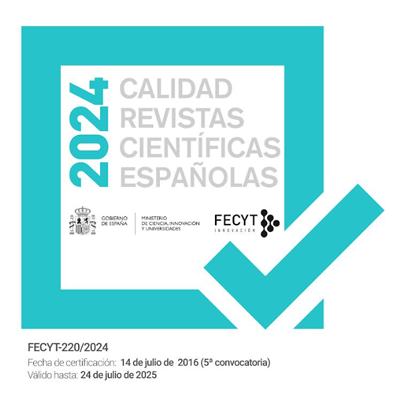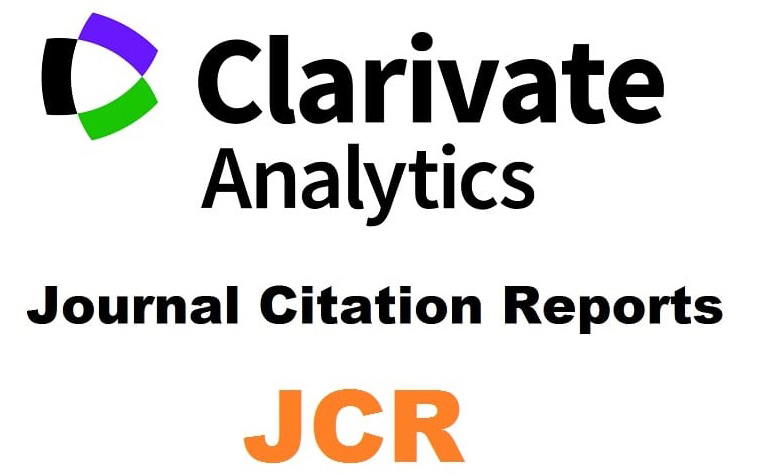Spain in the face of the 4.0 Industrial Revolution: Labor market and training
DOI:
https://doi.org/10.12795/araucaria.2021.i47.21Keywords:
revolución industrial, inteligencia artificial, automatización, capital humano, empleoAbstract
The process of robotization and the introduction of artificial intelligence which are linked to the 4.0 Industrial Revolution imply economic and social changes. This article analyzes its implications for the Spanish labor market, discussing the existence of possible imbalances, present or future, between the supply and demand of workers. For this reason this study assesses, on the one hand, the recent evolution of the Spanish productive structure and, on the other, the labor supply. More specifically, special attention is paid to the educational level and skills of the workers, since they are central in the definition of the professional profiles generated as a result of the digitization and automation of the economy. A number of the strengths and weaknesses of the formative structure of the Spanish population are then discussed. The 4.0 Industrial Revolution creates new opportunities for workers with a higher level of training and high digital, financial or STEM skills. On the contrary, older workers and workers with a lower level of training appear among the most vulnerable groups. The introduction of reforms in the training system is urgent not only to consolidate the process of economic transformation, but also to minimize the social costs associated with the 4.0 Industrial Revolution.
Downloads
Metrics
References
Acemoglu, D., & Restrepo, P. (2020). Robots and jobs: Evidence from US labor markets. Journal of Political Economy, 128(6): 2188-2244.
Aghion, P., Jones, B. F., & Jones, C. I. (2019). 9. Artificial Intelligence and Economic Growth (pp. 237-290). En The Economics of Artificial Intelligence: An Agenda. Chicago: University of Chicago Press.
Arntz, M., Gregory, T., & Zierahn, U. (2017). Revisiting the risk of automation. Economics Letters, 159: 157-160.
Autor, D. & Salomons, A. (2017). Robocalypse Now: Does Productivity Growth Threaten Employment? European Central Bank Sintra Forum Conference Paper, junio.
Berg, A., Buffie, E. F., & Zanna, L. F. (2018). Should we fear the robot revolution? (The correct answer is yes). Journal of Monetary Economics, 97: 117-148.
Braña, F. J. (2019). A fourth industrial revolution? Digital transformation, labor and work organization: a view from Spain. Journal of Industrial and Business Economics, 46(3): 415-430.
Brynjolfsson, E., & Mitchell, T. (2017). What can machine learning do? Workforce implications. Science, 358(6370): 1530-1534.
Bughin, J., Hazan, E., Ramaswamy, S., Chui, M., Allas, T., Dahlstrom, P., & Trench, M. (2017). Artificial intelligence: The next digital frontier? McKinsey Glob Institute Discussion Paper, June.
Cabus, S., Napierala, J., & Carretero, S. (2021). The returns to non-cognitive skills: A meta-analysis. JRC Working Papers Series on Labour, Education and Technology, No. 2021/06.
Caselli, F., & Manning, A. (2019). Robot arithmetic: new technology and wages. American Economic Review: Insights, 1(1): 1-12.
CEDEFOP (2018). Insights into skill shortages and skill mismatch Learning from Cedefop’s European skills and jobs survey. Luxembourg: Publications Office.
Choi, Á. & Calero, J. (2018). El capital humano en los procesos de automatización: una primera aproximación al caso español. Cuadernos Económicos del ICE, 95: 13-32C.
Comisión Europea (2020). Monitor de la Educación y de la Formación de 2020. España. Luxemburgo: Oficina de Publicaciones de la Unión Europea.
Cowen, T. (2019). Neglected open questions in the economics of artificial intelligence (pp. 391-395). En The Economics of Artificial Intelligence: An Agenda. Chicago: University of Chicago Press.
Cunha, F. & Heckman, J.J. (2010). Investing in Our Young People. NBER Working Paper Series, 16201.
Dauth, W., Findeisen, S., Jens, S., & Woessner, N. (2017). German Robots-The Impact of Industrial Robots on Workers. CEPR Discussion Papers, 12306.
Decker, M., Fischer, M., & Ott, I. (2017). Service Robotics and Human Labor: A first technology assessment of substitution and cooperation. Robotics and Autonomous Systems, 87: 348-354.
Dolado, J. J., Felgueroso, F., & Jimeno, J. F. (2021). Past, present and future of the Spanish labour market: when the pandemic meets the megatrends. Applied Economic Analysis, 29(85): 21-41.
Doménech, R., García, J. R., Montañez, M., & Neut, A. (2018). How vulnerable is Spanish employment to the digital revolution? BBVA Research Working Paper.
Eichhorst, W. (2015). Do we have to be afraid of the future world of work? IZA Policy Paper, 102.
Frey, C. B., & Osborne, M. A. (2017). The future of employment: How susceptible are jobs to computerisation? Technological Forecasting and Social Change, 114: 254-280.
Gibbs, M. (2017). How is new technology changing job design? IZA World of Labor, 344.
González-Páramo, J. M. (2018). Cuarta revolución industrial, empleo y estado de bienestar. En Anales de la Real Academia de Ciencias Morales y Políticas (pp. 89-113). Madrid: Ministerio de Justicia.
Hutter, C., & Weber, E. (2017). The effects of skill-biased technical change on productivity flattening and hours worked. IAB-Discussion Paper, 32/2017.
Kuzmenko, O., & Roienko, V. (2017). Nowcasting income inequality in the context of the Fourth Industrial Revolution. SocioEconomic Challenges, 1(1): 5-12.
Korinek, A., & Stiglitz, J. E. (2019). Artificial Intelligence and Its Implications for Income Distribution and Unemployment (pp. 349-390). En The Economics of Artificial Intelligence: An Agenda. Chicago: University of Chicago Press.
Levy, F. (2018). Computers and populism: artificial intelligence, jobs, and politics in the near term. Oxford Review of Economic Policy, 34(3): 393-417.
Lane, M. & Saint-Martin, A. (2021). The impact of Artificial Intelligence on the labour market: What do we know so far? OECD Social, Employment and Migration Working Papers, 256.
Lladós-Masllorens, J. (2019). Surfing the Waves of Digital Automation in Spanish Labor Market (pp. 451-458). En The International Research & Innovation Forum. Springer, Cham.
Mokyr, J. (2018). The past and the future of innovation: Some lessons from economic history. Explorations in Economic History, 69: 13-26.
Morikawa, M. (2017). Who are afraid of losing their jobs to artificial intelligence and robots? Evidence from a survey. GLO Discussion Paper, 71.
OECD (2013). OECD Skills Outlook 2013: First Results from the Survey of Adult Skills. París: OCDE.
OCDE (2019). The Future of Work. OECD Employment Outlook 2019. Paris: OCDE.
Peco, P. P. (2017). Nuevos empleos, nuevas habilidades: ¿estamos preparando el talento para la Cuarta Revolución Industrial? Información Comercial Española, ICE: Revista de Economía, 898: 59-72.
Raj, M. & Seamans, R. (2019). AI, labor, productivity, and the need for firm-level data (pp.553-565). En Economics of Artificial Intelligence. Chicago: University of Chicago.
Sachs, J. D., Benzell, S. G., & LaGarda, G. (2015). Robots: Curse or blessing? A basic framework. NBER Working Papers, 21091.
Schmidpeter, B. & Winter-Ebmer, R. (2018). How Do Automation and Offshorability Influence Unemployment Duration and Subsequent Job Quality? IZA Discussion Paper, 11736.
Vivarelli, M. (2014). Innovation, employment and skills in advanced and developing countries: A survey of economic literature. Journal of Economic Issues, 48(1): 123-154.
World Economic Forum. (2016). The future of jobs: Employment, skills and workforce strategy for the fourth industrial revolution. Ginebra: WEF.
Downloads
Published
How to Cite
Issue
Section
License
Las ediciones impresa y electrónica de esta Revista son editadas por el Secretariado de Publicaciones de la Universidad de Sevilla, siendo necesario citar la procedencia en cualquier reproducción parcial o total.Salvo indicación contraria, todos los contenidos de la edición electrónica se distribuyen bajo una licencia de uso y distribución “Creative Commons Atribución-NoComercial-SinDerivar 4.0 Internacional”
Accepted 2021-06-20
Published 2021-07-19
- Abstract 3489
- PDF (Español (España)) 1655










